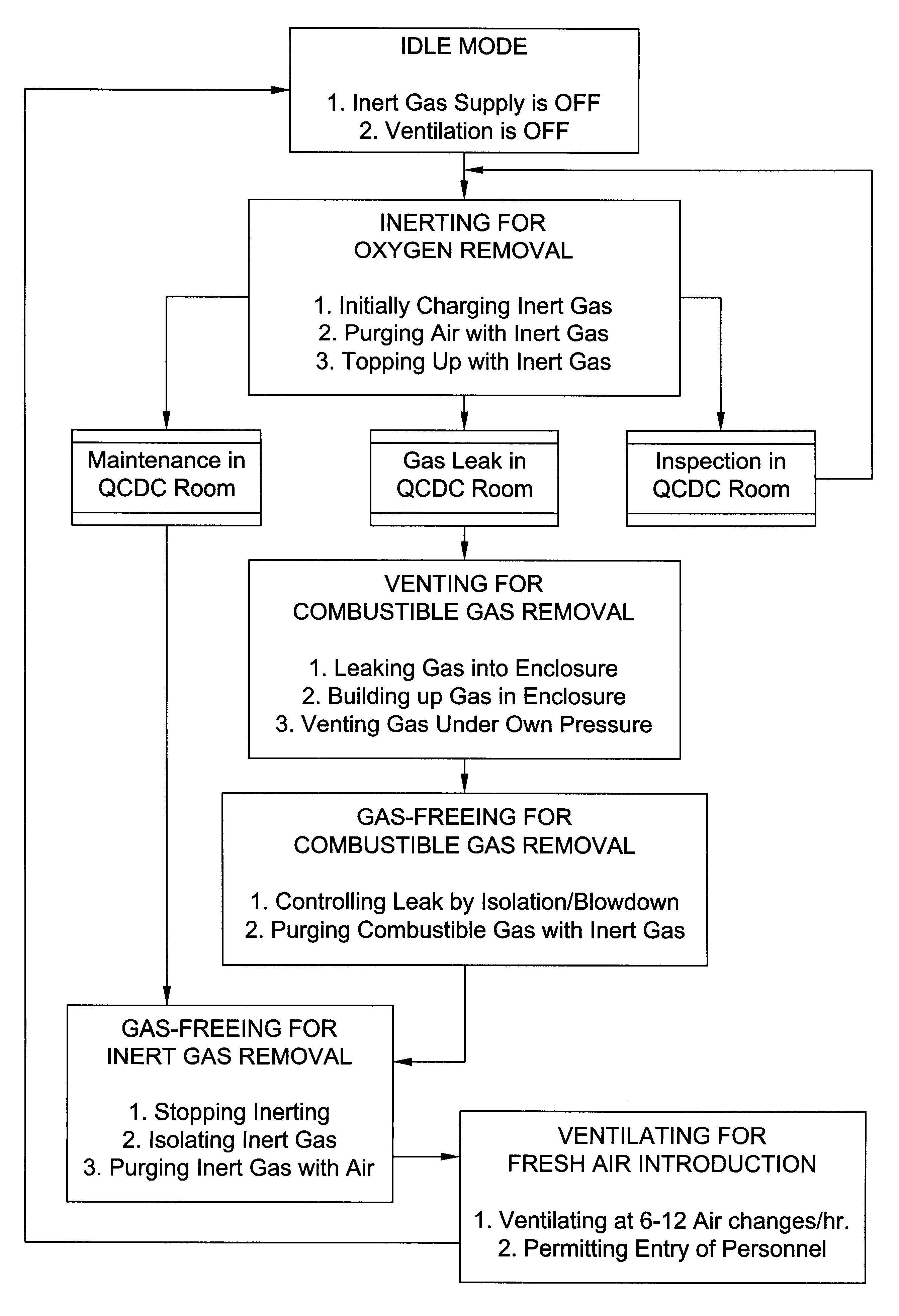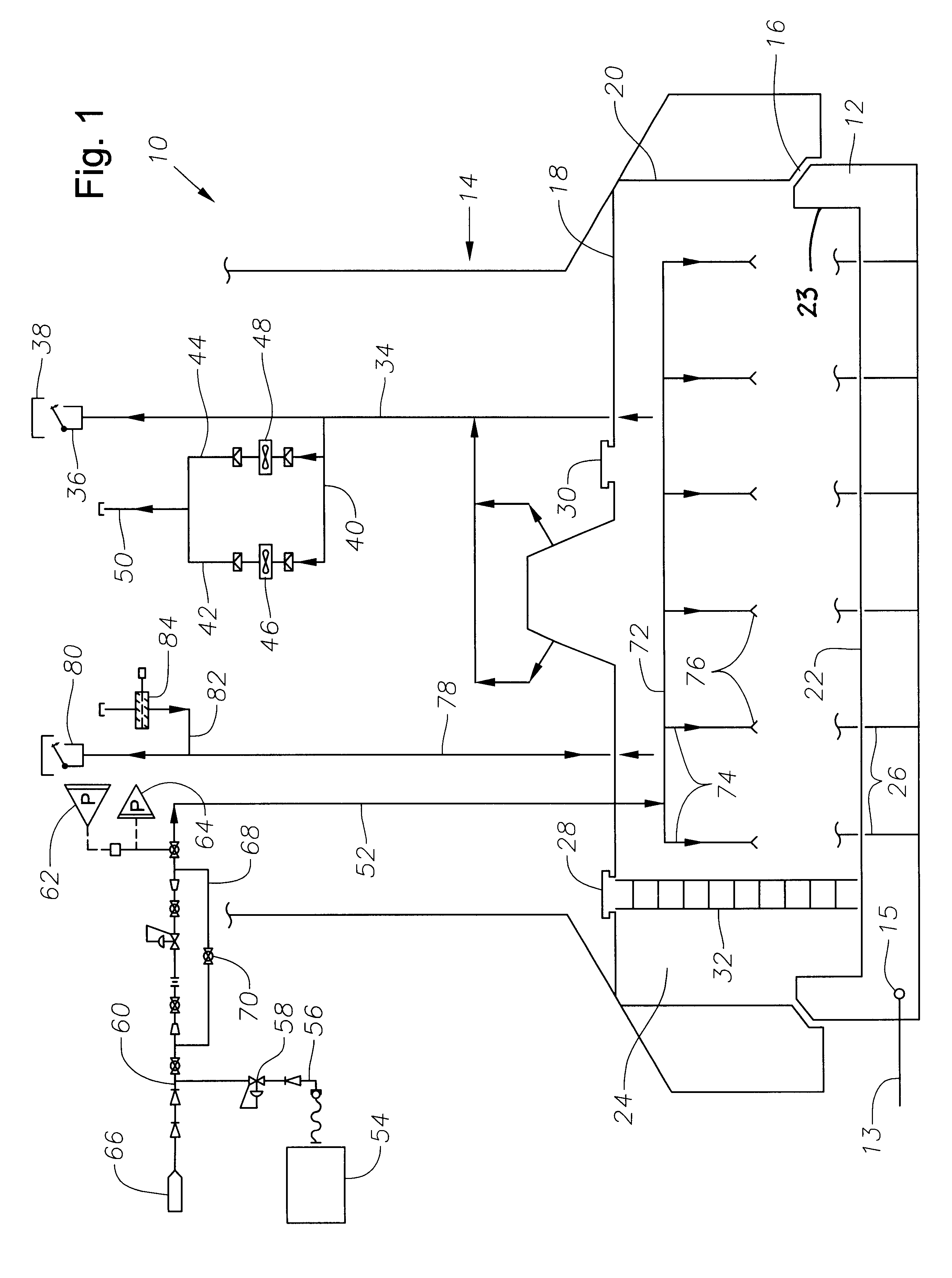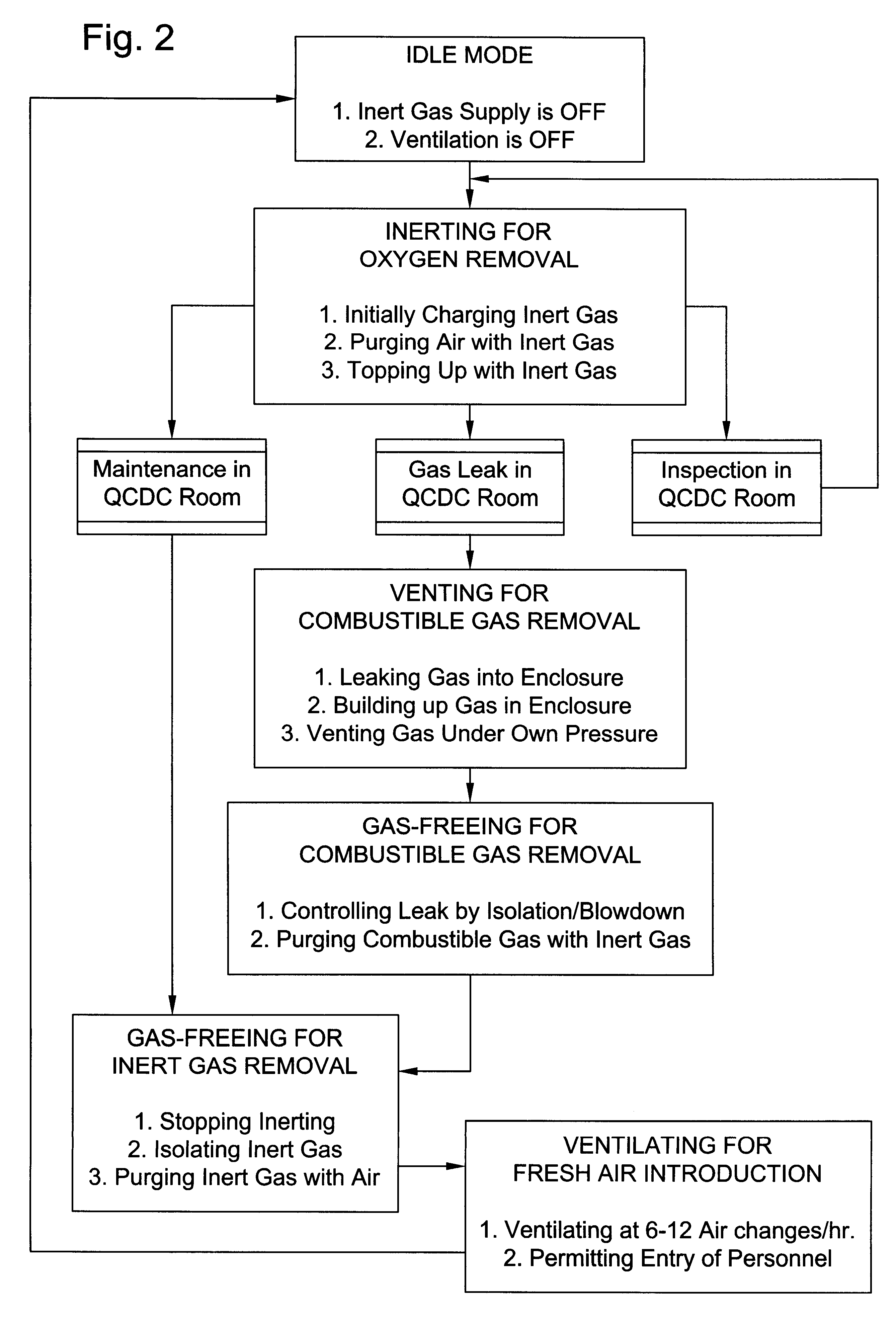Explosion prevention system for internal turret mooring system
a technology of turret mooring and explosion prevention, which is applied in the field of safety systems, can solve the problems of increasing the probability of an explosion, affecting the safety of the mooring system, and the potential flammability of the atmosphere,
- Summary
- Abstract
- Description
- Claims
- Application Information
AI Technical Summary
Benefits of technology
Problems solved by technology
Method used
Image
Examples
Embodiment Construction
Referring now to the drawings and first to FIG. 1 a schematic illustration of the preferred embodiment of the explosion prevention system for the internal turret 14 of a Floating Production Storage and Offloading (FPSO) vessel is shown generally at 10 which is secured in substantially stationary mooring condition when secured to the upper portion of a mooring buoy 12, also known as a spider buoy, which is anchored to the sea floor by anchor legs 13 connected to the mooring buoy structure 12 at connecting points 15. The turret 14 provides the attachment and rotation point of the single point mooring system for the FPSO vessel and provides the point for the connection and disconnection of the mooring system and the flexible riser system. Quick connect / disconnect (QCDC) valve assemblies for each production riser are housed in the QCDC room 24, an enclosure located at the base of the turret shaft and being cooperatively defined by structures of buoy 12 and turret 14. These risers contai...
PUM
 Login to View More
Login to View More Abstract
Description
Claims
Application Information
 Login to View More
Login to View More - R&D
- Intellectual Property
- Life Sciences
- Materials
- Tech Scout
- Unparalleled Data Quality
- Higher Quality Content
- 60% Fewer Hallucinations
Browse by: Latest US Patents, China's latest patents, Technical Efficacy Thesaurus, Application Domain, Technology Topic, Popular Technical Reports.
© 2025 PatSnap. All rights reserved.Legal|Privacy policy|Modern Slavery Act Transparency Statement|Sitemap|About US| Contact US: help@patsnap.com



